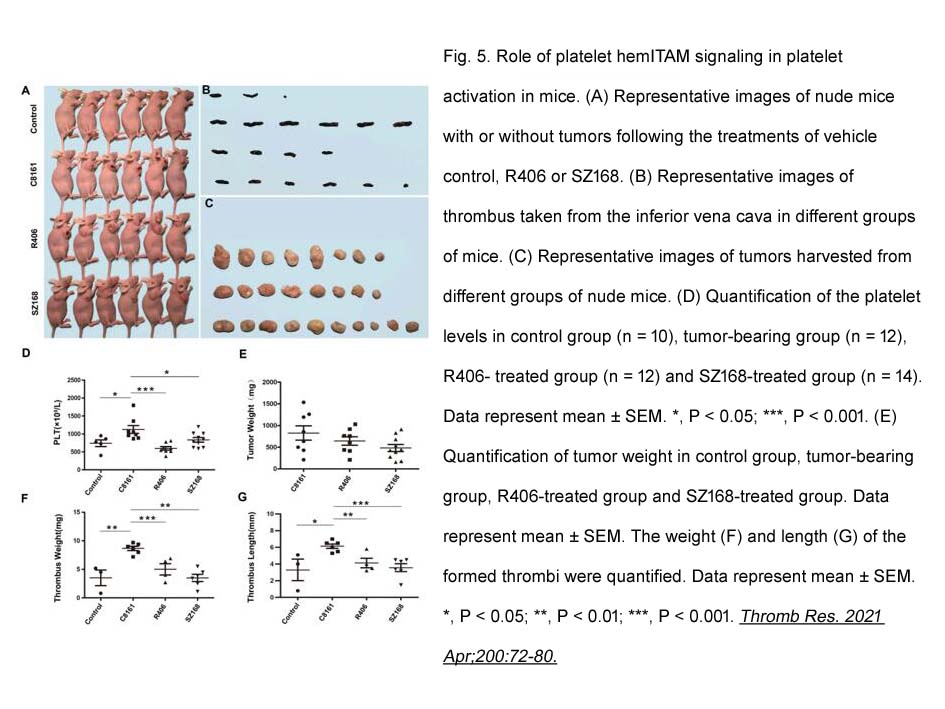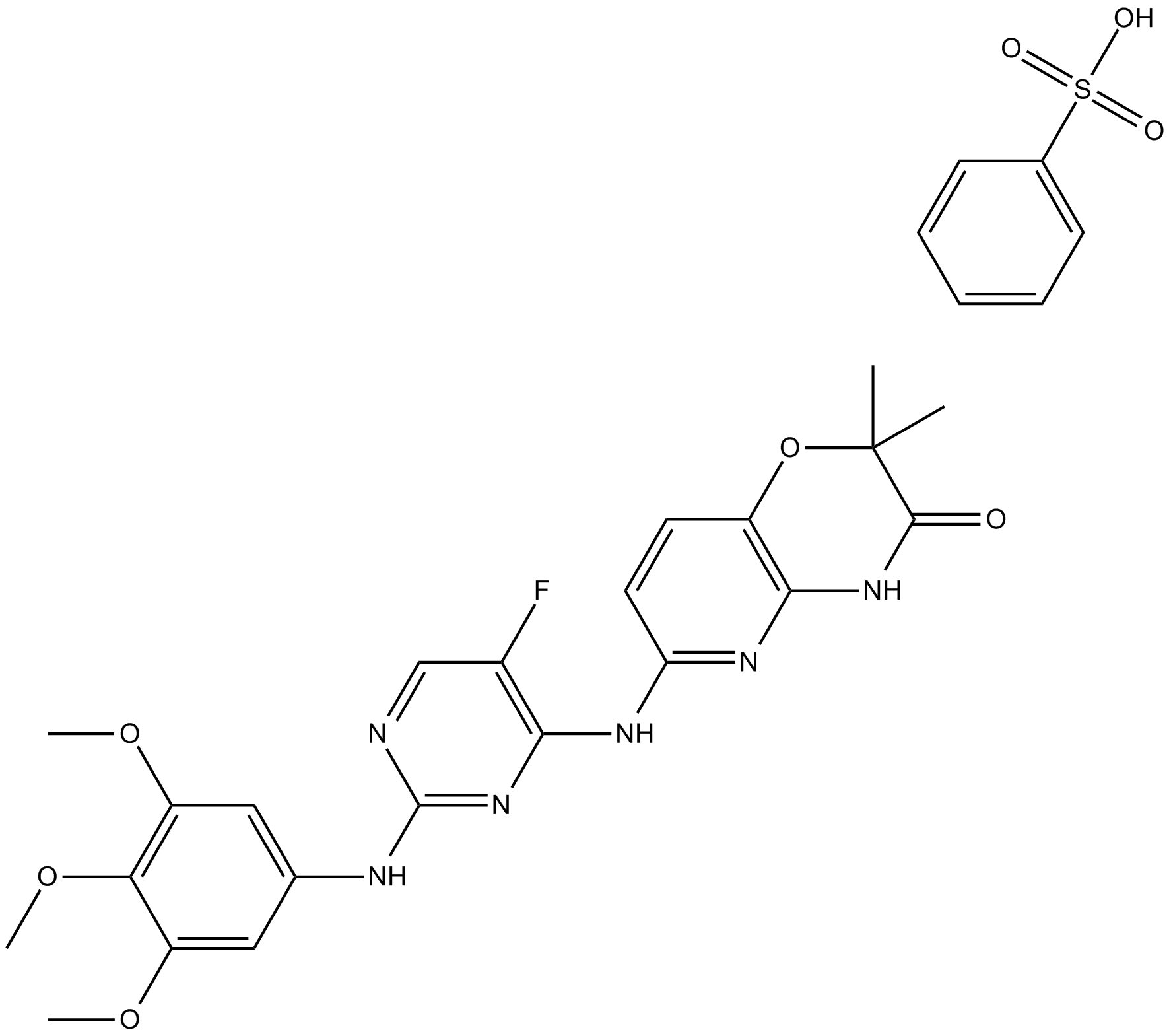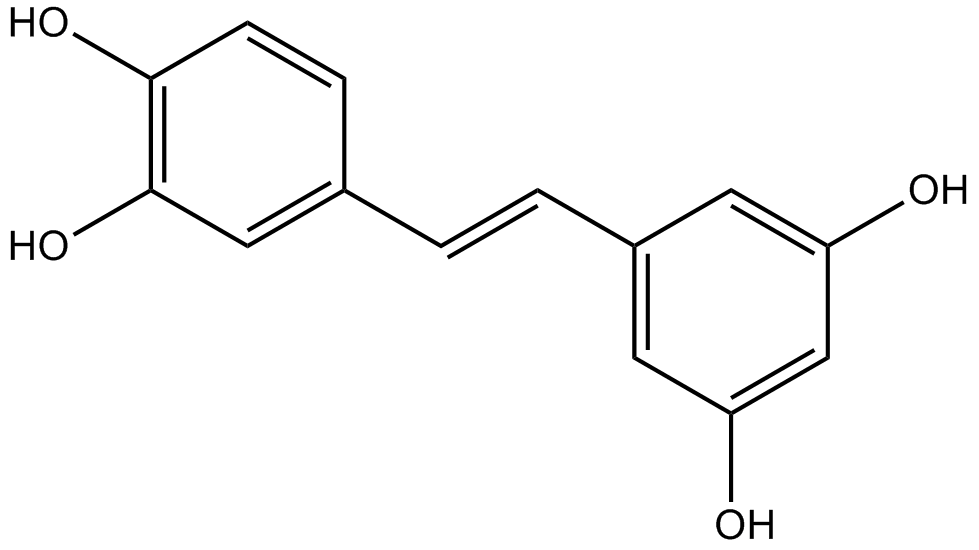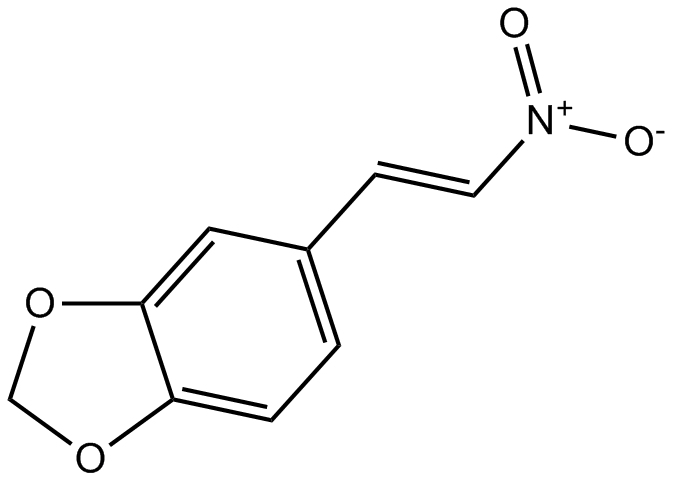R406
R406 is a potent SYK inhibitorSpleen tyrosine kinase (SYK) is a non-receptor tyrosine kinase mainly expressed in hematopoietic cells. It transmits signals from a variety of cell surface receptors including CD74, Fc receptor and integrins. It is crucial for adaptive immune response, and also very important for cellular adhesion, innate immune recognition, osteoclast maturation, platelet activation and vascular development. [1]
Functional abnormality of SYK has been implicated in several blood malignancies. Constitutively active SYK can transform B cells. SYK inhibition can be beneficial for patients with blood cancers and autoimmune diseases.
R406 is a potent inhibitor of IgE and IgG mediated Fc receptor activation with EC50 for degranulation of 56-64 nM. [2] R406 targets SYK and inhibits phosphorylation of SYK substrates by binding to its ATP binding pocket and competing with ATP. R406 strongly inhibits SYK kinase activity with an IC50 of 41 nM.
R406 induces apoptosis in diffuse large B-cell lymphoma cell lines. It blocks B cell receptor signaling through inhibiton of SYK autophosphorylation of Y525/Y526 and SYK-dependent phosphorylation of the B-cell linker protein. [3]
R406 can be administrated orally.
References:
[1]Mocsai A, Ruland J, Tybulewicz VL. The SYK tyrosine kinase: a crucial player in diverse biological functions. Nat Rev Immunol 2010. 10(6): 387-402.
[2]Braselmann S, Taylor V, Zhao H, et al. R406, an orally available spleen tyrosine kinase inhibitor blocks fc receptor signaling and reduces immune complex-mediated inflammation. J Pharmacol Exp Ther 2006. 319(3): 998-1008.
[3]Chen L, Monti S, Juszczynski P, et al. SYK-dependent tonic B-cell receptor signaling is a rational treatment target in diffuse large B-cell lymphoma. Blood 2008. 111(4): 2230*2237.
- 1. Tong Shen, Guiyun Cui, et al. "TREM-1 mediates interaction between substantia nigra microglia and peripheral neutrophils." Neural Regen Res. 2024 Jun 1;19(6):1375-1384 PMID: 37905888
- 2. Marieke Van Daele, Laura E Kilpatrick, et al. "Characterisation of tyrosine kinase inhibitor-receptor interactions at VEGFR2 using sunitinib-red and nanoBRET." Biochem Pharmacol. 2023 Aug;214:115672. PMID: 37406966
- 3. Lianghua Xia, Bo Zhang, et al. "Analysis of Syk/PECAM-1 signaling pathway in low shear stress induced atherosclerosis based on ultrasound imaging." Comput Methods Programs Biomed. 2021 Apr;201:105953. PMID:33571923
- 4. Xia Wang, Biao Liu, et al. "Blocking podoplanin inhibits platelet activation and decreases cancer-associated venous thrombosis." Thromb Res. 2021 Apr;200:72-80. PMID:33548843
- 5. Gao D, Wang L, et al. "Spleen tyrosine kinase SYK(L) interacts with YY1 and coordinately suppresses SNAI2 transcription in lung cancer cells." FEBS J. 2018 Sep 24. PMID:30251328
| Physical Appearance | A solid |
| Storage | Store at -20°C |
| M.Wt | 628.63 |
| Cas No. | 841290-81-1 |
| Formula | C22H23FN6O5·C6H6O3S |
| Solubility | ≥31.45 mg/mL in DMSO; insoluble in H2O; ≥14.95 mg/mL in EtOH with ultrasonic |
| Chemical Name | benzenesulfonic acid;6-[[5-fluoro-2-(3,4,5-trimethoxyanilino)pyrimidin-4-yl]amino]-2,2-dimethyl-4H-pyrido[3,2-b][1,4]oxazin-3-one |
| SDF | Download SDF |
| Canonical SMILES | CC1(C(=O)NC2=C(O1)C=CC(=N2)NC3=NC(=NC=C3F)NC4=CC(=C(C(=C4)OC)OC)OC)C.C1=CC=C(C=C1)S(=O)(=O)O |
| Shipping Condition | Small Molecules with Blue Ice, Modified Nucleotides with Dry Ice. |
| General tips | We do not recommend long-term storage for the solution, please use it up soon. |
| Cell experiment: [1] | |
|
Cell lines |
Human mast cells |
|
Preparation method |
The solubility of this compound in DMSO is >10 mM. General tips for obtaining a higher concentration: Please warm the tube at 37 °C for 10 minutes and/or shake it in the ultrasonic bath for a while.Stock solution can be stored below -20°C for several months. |
|
Reaction Conditions |
EC50: 56 nM, 30min |
|
Applications |
Cells were incubated with R406 or DMSO for 30 min. They were then stimulated with either 0.25 to 2 mg/ml anti-IgE or anti-IgG or 2 μM ionomycin. R406 dose-dependently inhibited anti-IgE-mediated CHMC degranulation measured as tryptase release but showed no activity on ionomycin-triggered tryptase release, indicating that R406 is specific to FcR signaling and not degranulation per se. As intended, this specific inhibition also implies that R406 site of action is proximal to the receptor complex and upstream of calcium mobilization. |
| Animal experiment: [1] | |
|
Animal models |
Female C57BL/6 mice |
|
Dosage form |
Oral administration, 0.1, 0.5, 1 and 5 mg.kg |
|
Applications |
Mice were used for the model of immune complex - mediated inflammation. The ability of R406 to inhibit the reverse passive Arthus reaction was investigated in this model. Prophylactic treatment of mice with R406 administered 1 h before immune complex challenge reduced the cutaneous reverse passive Arthus reaction by approximately 72 and 86% at 1 and 5 mg/kg, respectively, compared with the vehicle control. The net optical density reading of extravasated dye extracted after treatment with R406 at 1 or 5 mg/kg R406 was reduced from 0.14 (vehicle) to 0.04 or 0.02, respectively. |
|
Other notes |
Please test the solubility of all compounds indoor, and the actual solubility may slightly differ with the theoretical value. This is caused by an experimental system error and it is normal. |
|
References: [1] Braselmann S, Taylor V, Zhao H, et al. R406, an orally available spleen tyrosine kinase inhibitor blocks fc receptor signaling and reduces immune complex-mediated inflammation. Journal of Pharmacology and Experimental Therapeutics, 2006, 319(3): 998-1008. |
|
| Description | R406 is a potent inhibitor of Syk with IC50 of 41 nM. | |||||
| Targets | Syk | |||||
| IC50 | 41 nM | |||||
Quality Control & MSDS
- View current batch:
Chemical structure
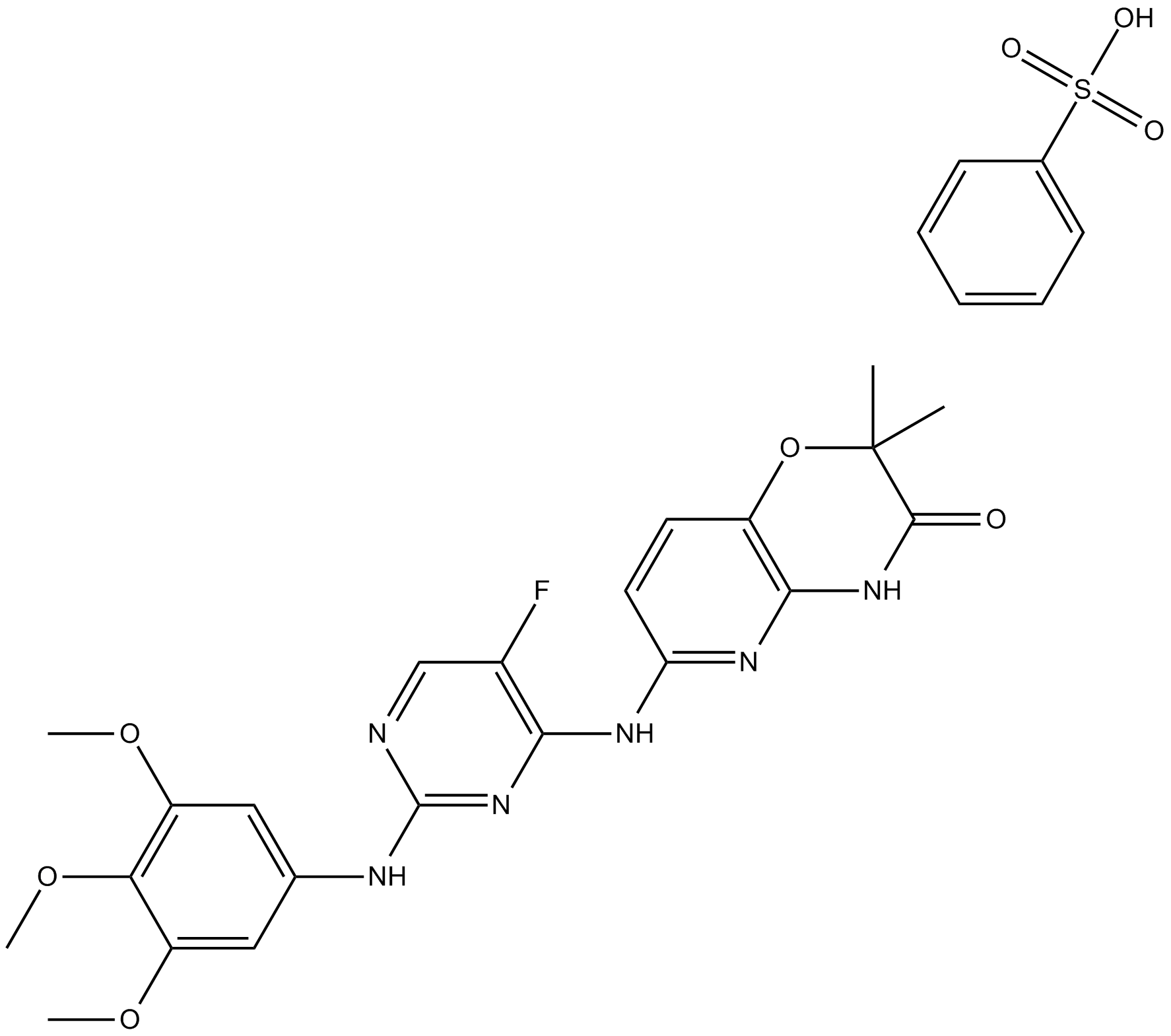
Related Biological Data
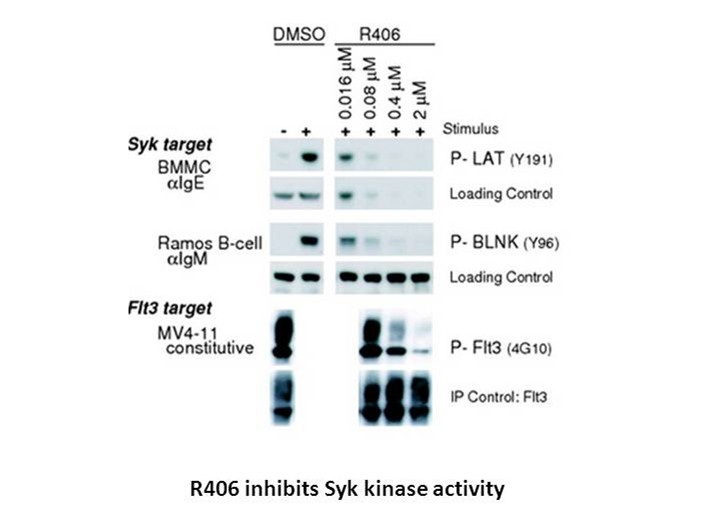
Related Biological Data
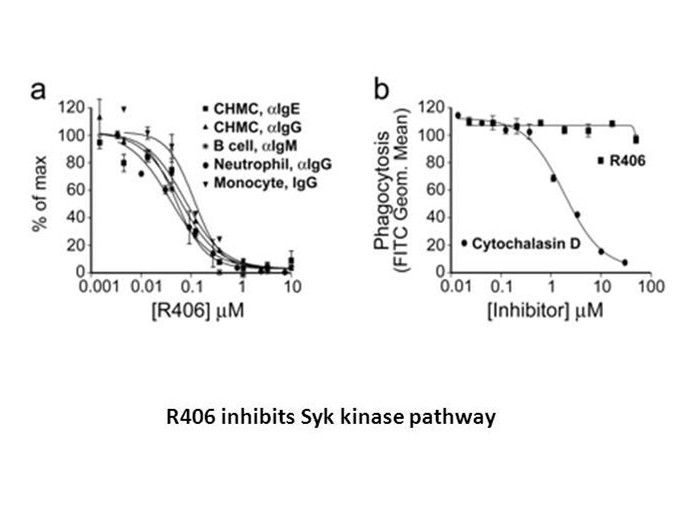
Related Biological Data
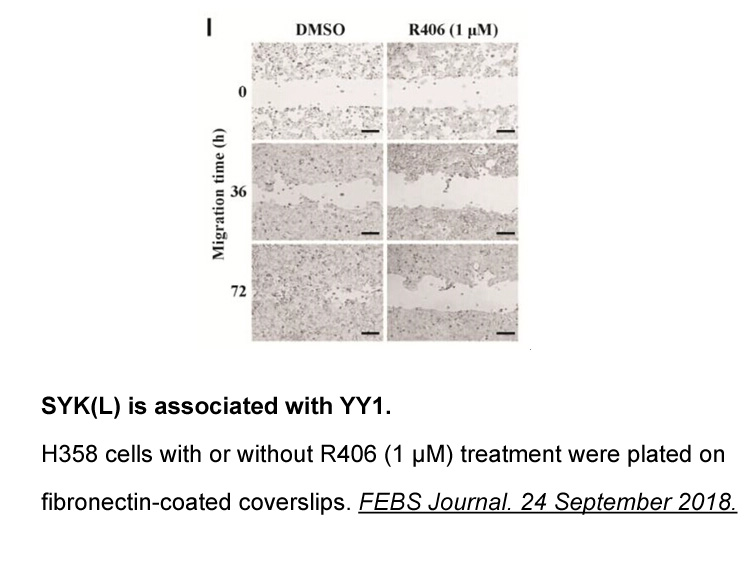
Related Biological Data
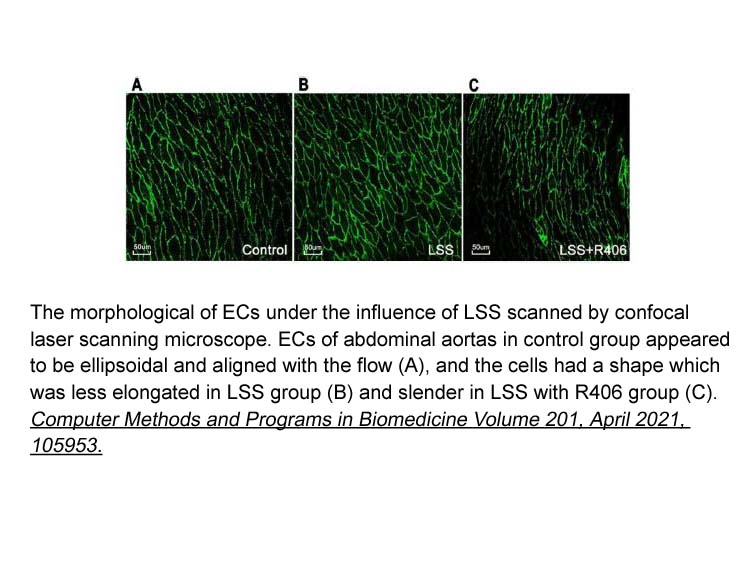
Related Biological Data
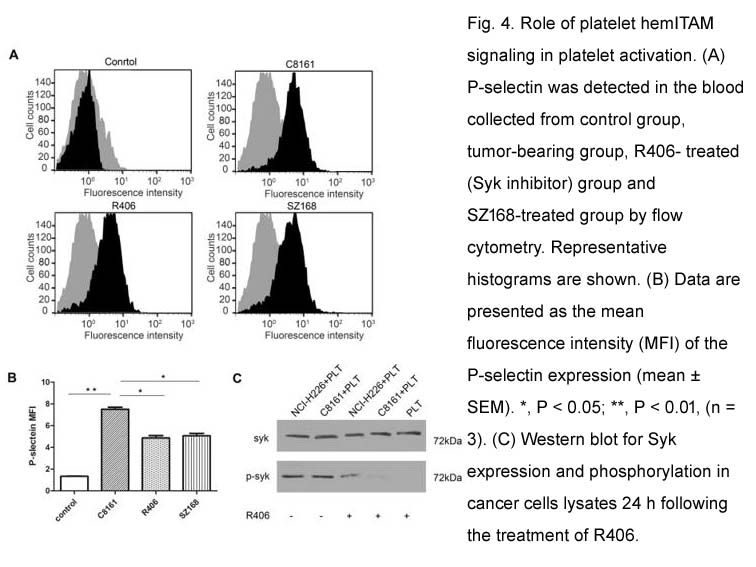
Related Biological Data
